Did you know the word chutney comes from the Hindi word chatna, which literally means “to lick”? It’s an old word for something that’s been around much longer than most people realize. Chutney isn’t a happy kitchen accident — it dates back over 3,000 years and is mentioned in ancient Ayurvedic texts from around 500 BCE. Some even believe chutney existed before cooked meals became common.
Of all the chutneys I’ve tried, coriander chili chutney is probably my favorite. The simplest version is just fresh coriander and green chilies blended together — but in many parts of North India, it’s made differently.
In the mountain regions, especially among the Pahadis, it’s prepared on a sil batta — a flat stone and roller used for grinding spices. The ingredients are crushed by hand, creating a coarse, rustic texture that tastes far better than anything from a blender. It’s often eaten with roti or Bhatura and fresh butter — no extras, just bold, clean flavor.
Some say the Mughals invented chutneys, but they more likely refined them. They added dry fruits and new spices, turning simple chutneys into royal accompaniments. The heart of the idea, though — fresh ingredients pounded together to bring contrast to a meal — goes back much further.
Coriander chili chutney remains one of the most versatile. It pairs beautifully with everything from samosas and pakoras to rich curries like dal makhani. The heat cuts through heavy flavors, and the freshness of coriander keeps everything bright. Traditionally, it’s meant to be hot — really hot — but you can adjust the chilies to suit your taste.
The secret to a good chutney is simple: use the freshest ingredients you can find, especially coriander. That’s what gives it the vivid green color and the pure, herbal flavor that makes you reach for another spoonful.
So now that you know where the word chutney comes from, don’t be surprised if this one makes you do exactly what its name suggests.
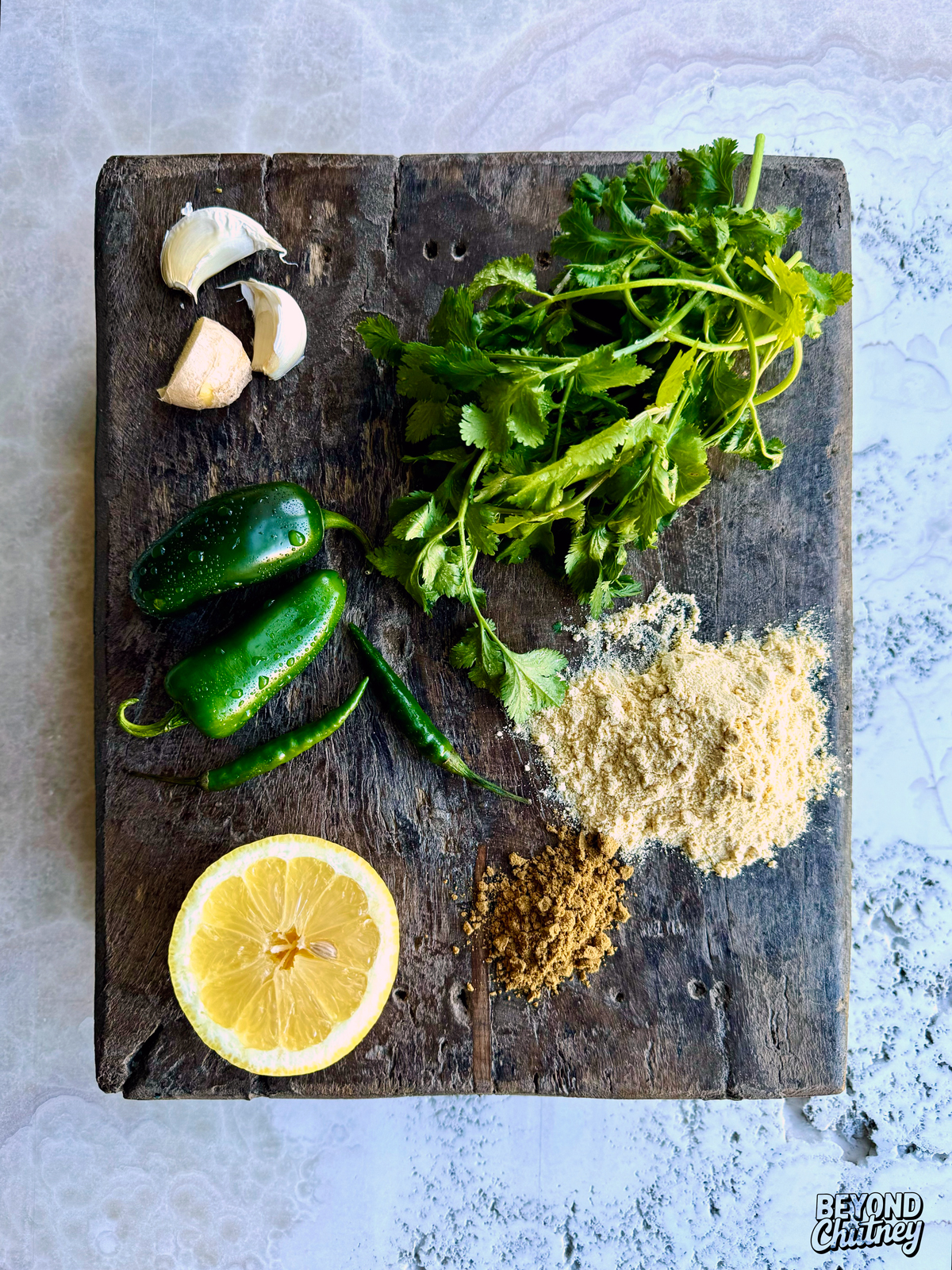
Coriander Chili Chutney
Equipment
- 1 Blender
Ingredients
- Ingredients:
- 1 bunch fresh coriander leaves washed and drained (about 1 cup loosely packed)
- 1½ to 2 tablespoons chickpea flour or substitute with roasted peanuts, chickpea flour, or grated coconut
- 1-4 green chilis depending on heat preference
- 1 teaspoon roasted cumin seeds or ¾ teaspoon roasted cumin powder
- ¼ teaspoon salt adjust to taste
- 1 to 1½ tablespoons lemon juice to taste
- 2 small garlic cloves optional
Instructions
- Add all the ingredients to a blender.
- Pour in 1 to 3 tablespoons of water, depending on how thick or runny you want the chutney.
- Blend until smooth and creamy.
- Taste and adjust with more lemon juice or salt if needed.
- Store in an airtight container in the fridge.
- Best used within 2 to 3 days.
Notes
- The chutney tastes brightest when it’s freshly made. It keeps for 2 to 3 days in the fridge, but the color may darken slightly over time — that’s normal.
- If your coriander stems are thin and fresh, include them — they add flavor and help the chutney blend more easily.
- The chickpea flour adds body and a mild, nutty flavor to the chutney. Traditionally, roasted chana dal is used, but other common substitutes include roasted peanuts or even a spoonful of grated coconut — all depending on what’s in your kitchen.
- For a smoother texture, blend longer and add water slowly — too much at once can make the chutney thin and dull in flavor.
- You can skip the garlic if you’re serving it with yogurt-based dishes or just want a cleaner, brighter flavor.
Nutrition
FAQ
Where is coriander chili chutney most common?
This chutney is found throughout North India, but it’s especially popular in the mountain regions, where it’s made by hand on a sil batta — a traditional stone grinder. It’s served with roti, parathas, or even fresh butter, and sometimes with rice dishes or snacks.
Can I make it without a blender?
Yes. Traditionally, it’s made with a sil batta, which gives it a coarse, rustic texture. If you want a similar result without the stone grinder, use a mortar and pestle and crush the ingredients by hand.
What does coriander chili chutney taste like?
It’s bright, spicy, and fresh with a strong herbal kick from coriander and a clean heat from green chilies. The lemon juice adds acidity, while roasted cumin and chickpea flour give it body and depth.
How spicy is it?
Traditionally, it’s quite hot. But you can easily adjust the heat level — remove the chili seeds for a milder flavor, or add more chilies if you like it fiery.
What can I serve it with?
It goes with almost everything — samosas, pakoras, kebabs, sandwiches, parathas, or rice. It’s also great with rich dishes like dal makhani, butter chicken, or anything fried.
Can I skip chickpea flour?
Yes. Chickpea flour adds thickness and a mild nutty flavor, but you can replace it with roasted peanuts, roasted chana dal, or even a spoonful of grated coconut.
Why does my chutney turn dark after a few hours?
That’s natural oxidation. Fresh coriander darkens when exposed to air or acidic ingredients like lemon juice. The flavor remains the same, even if the color fades slightly. To slow this process, use cold water and refrigerate it immediately after blending.
How long can I store it?
It stays fresh for 2–3 days in the refrigerator. Always store it in an airtight container to preserve the color and flavor.
Can I freeze coriander chili chutney?
You can, but it’s best enjoyed fresh. Freezing can dull the color and brightness of the herbs. If you do freeze it, pour it into ice cube trays for easy single portions.
Can I make it without garlic?
Yes. The chutney will taste lighter and more herb-forward. Skipping garlic makes it pair better with yogurt-based dishes or snacks that already have strong flavors.
What kind of coriander should I use?
Use fresh, tender coriander with soft stems — they add flavor and help the chutney blend smoothly. Avoid bunches that look limp or yellow.
How do I keep the chutney bright green?
Use cold water when blending, add lemon juice right away, and avoid over-blending. Too much heat from the blender can cause the color to darken.
Can I add mint leaves?
Yes. Many regional variations include mint for extra freshness. Add a small handful of fresh mint leaves along with the coriander for a cooling, balanced flavor.
What’s the best texture for this chutney?
That depends on preference. Some people like it smooth and creamy; others prefer it coarse and rustic. Add water gradually until it reaches the consistency you like.
Is it vegan and gluten-free?
Yes, it’s naturally vegan and gluten-free. Just ensure your chickpea flour (besan) or substitutes are pure and not mixed with wheat flour.


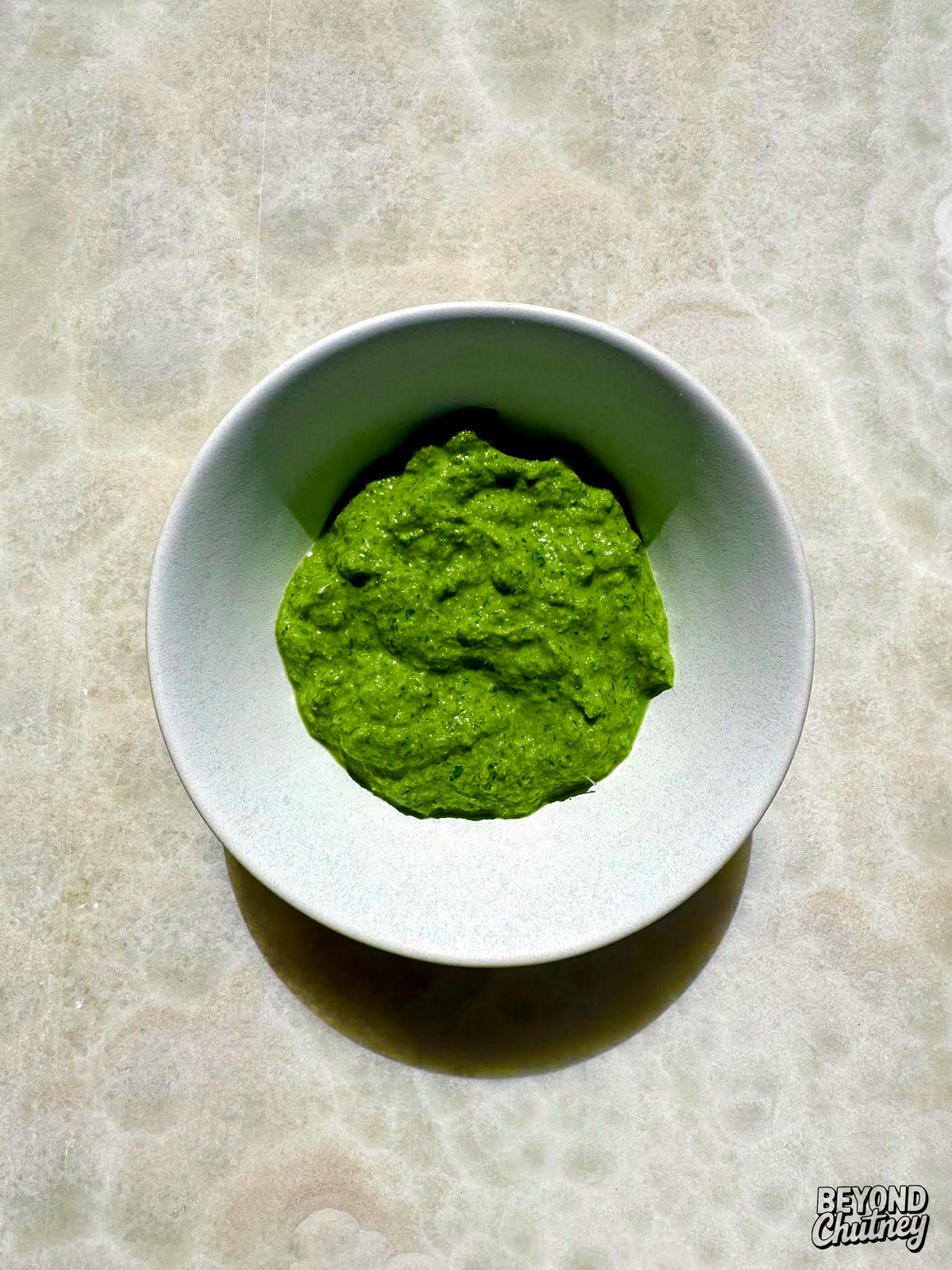
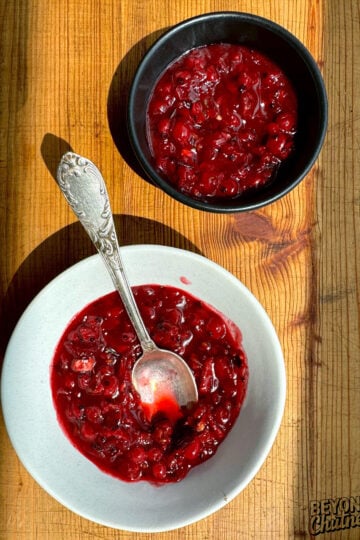
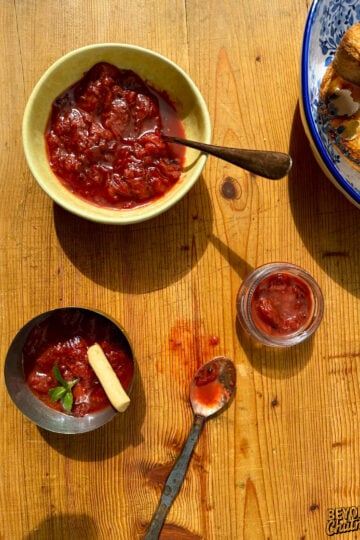
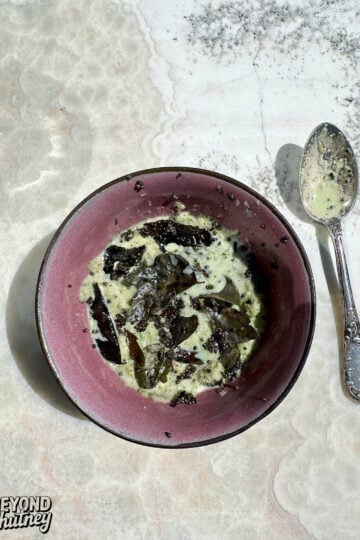

Have a question or something to share? Leave a comment below!